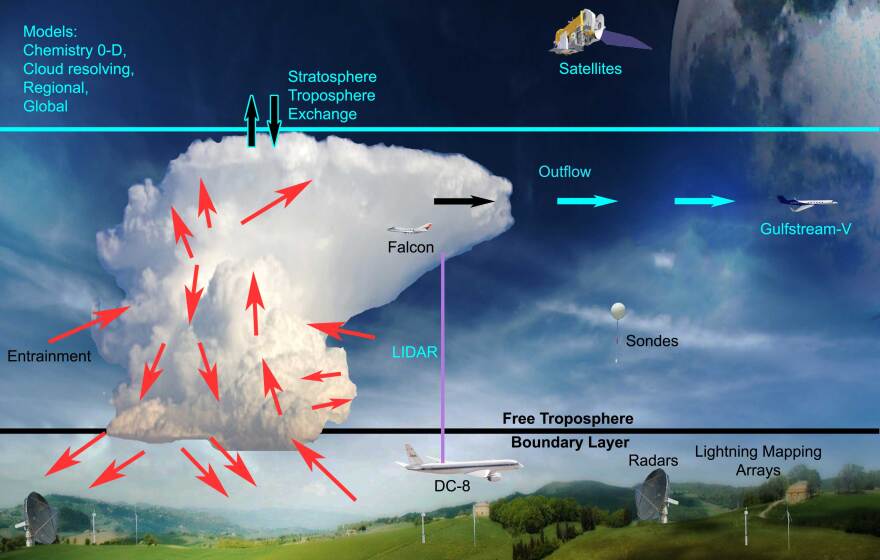Starting next week, scientists from Boulder’s National Center for Atmospheric Research will send airplanes packed with equipment into storms over northeastern Colorado.
One of the goals of the “Deep Convective Clouds and Chemistry Experiment,” or DC3, is to study what happens when surface air, and all its particles, are pulled into a storm's updraft and shot into the upper atmosphere.
Mary Barth, a principle investigator on the project, says three research aircraft being used in the experiment will measure how some volatile storms may be leaving chemical pollutants behind that produce ozone, lasting long after the storm dissipates.
“When thunderstorms form, air near the ground has nowhere to go but up. Suddenly you have an air mass at high altitude that’s full of chemicals that can produce ozone.”
According to Barth, storms shoot the surface air 10 miles into the atmosphere at speeds between 20 and 100 miles per hour. That air hits a barrier between the troposphere and the stratosphere and spreads out. However, the chemicals and pollutants from the surface of the Earth remain intact.
http://youtu.be/UVY6ty3GZ-0?hd=1&t=1s
NCAR says pollutants such as nitrogen oxides brought from the surface may produce ozone, a greenhouse gas, when interacting with other gasses and energy from the sun. Ozone has been known to cause warming of the Earth.
"We expect there will be days when pollution from Denver will be injected into these storms and some days where a cleaner air-mass will be injected into these storms, and we’ll be contrasting those days.”
Barth says scientists will fly into the updrafts as a storm is underway, than fly through the same air mass the following day to see how the chemical mixture has changed.
DC3 will not only use northeastern Colorado as a test area, but Oklahoma and Alabama as well. “The more different regions that we can study, the more we can understand how thunderstorms affect our climate,” Barth says. She adds May is the perfect time for this experiment because storms are just starting to form as the seasons change in the Midwest and Western parts of the United States.

The three planes used in the project are based in Kansas, a location central to all test areas. There will also be a plane from the German aerospace agency which will be used to fly near the core of the storms at very high altitudes.
Funding for the DC3 project comes from the National Science Foundation (NSF), National Oceanic and Atmospheric Administration (NOAA), and NASA, with involvement by more than 100 researchers from 26 organizations including NCAR.
According to Barth, data from the project could be used to forecast future air pollution levels or what Earth’s climate could look like 30 or 50 years from now. However, it may take over a year to collect and study the data collected from the experiment.








